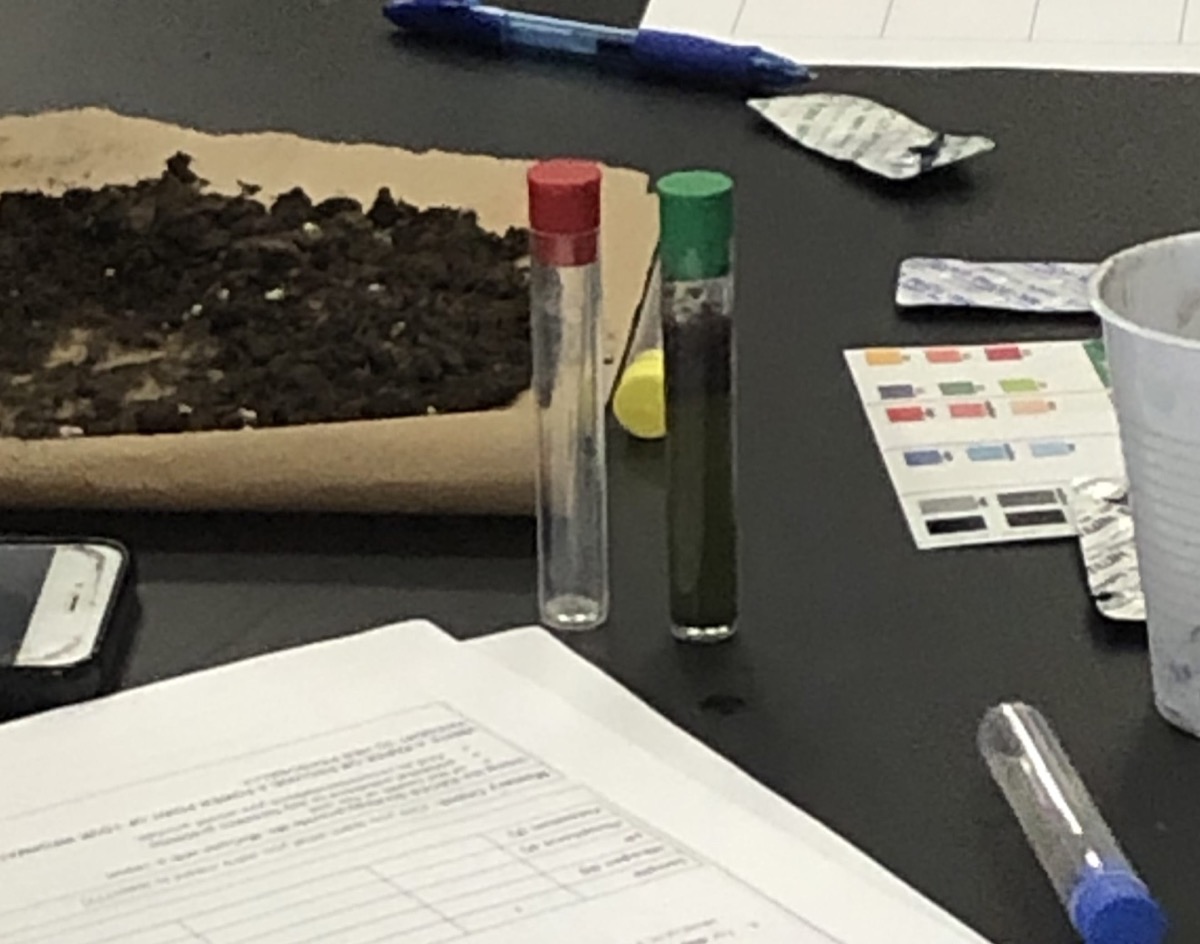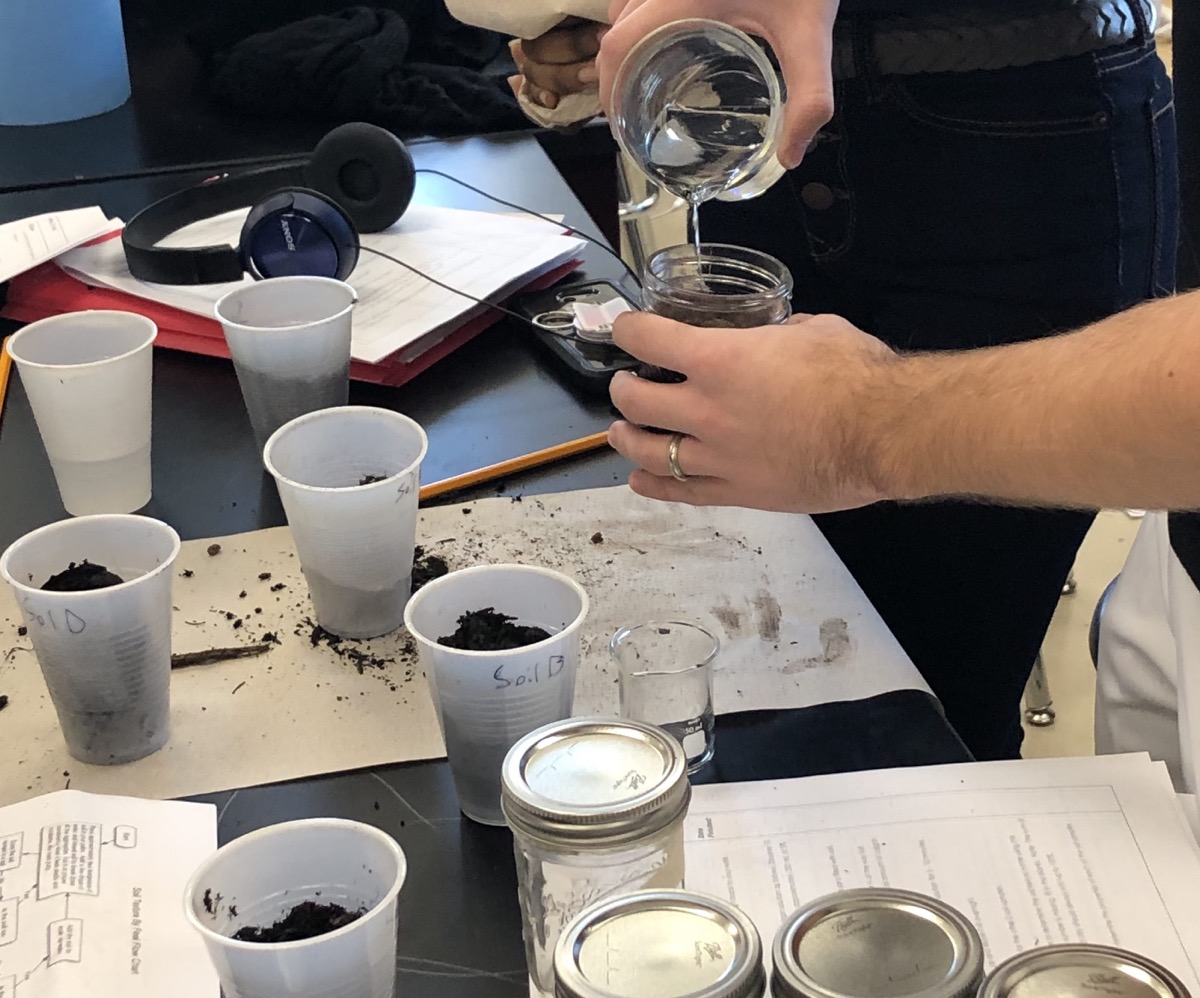
Erica Perkins’ students in AP Environmental Science at Linden McKinley STEM Academy spent time learning about soil, its properties, and how this affects the environment around it. The AP test involves an Earth Systems and Resources section, requiring students to understand soil and soil dynamics through knowledge of the rock cycle, formation, composition, physical and chemical properties, erosion and other soil problems, and soil conservation. Perkins introduced her students to these concepts through two different lessons from the Ohio Corn & Wheat-sponsored Feed the World workshop. Students scientifically tested five different soil samples from another science teacher’s raised beds.
The first lesson that the students did was the soil texture labtivity. This lab helped them see what soil is composed of and how these components separate when allowed to sit. The students began by preparing the soil in different mason jars with water and borax, and then shaking them. The jars were set aside to wait for them to separate, showing the different amounts of sand, soil, and silt.



Students followed this up with a second activity on determining soil composition through the use of texture. Students placed a small portion of soil in their palms and followed a flow chart to help them identify which soil they were dealing with.
While doing these two labs, students were able to compare the two methods of scientific procedure for both precision and accuracy in their results. If their findings matched, they were able to explain why this occurred. If they didn’t, they had to determine why they did not match.
The third lab that students performed was on nutrient content and pH of the soil. Using their test results, they let the teacher whose samples they were testing which raised beds were best for the planting her class was doing. These lessons also led into a study of nutrient cycles.